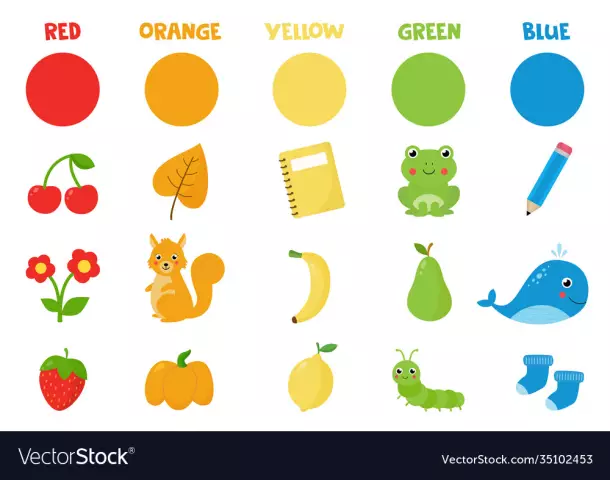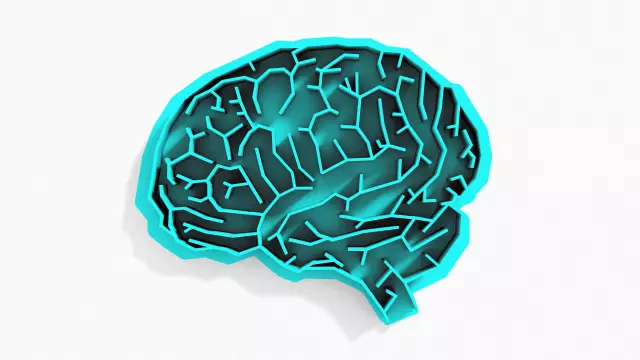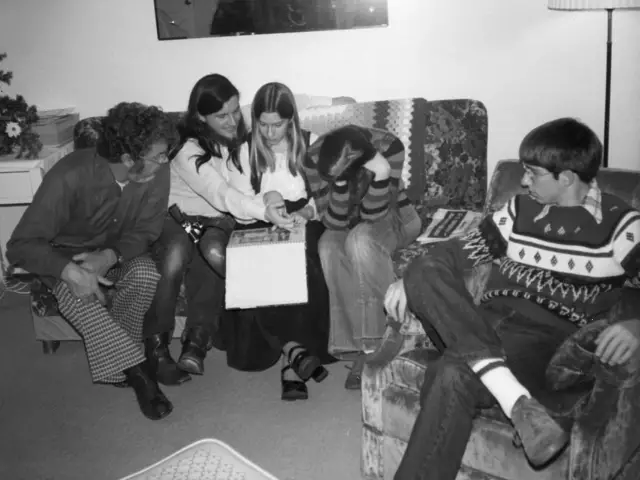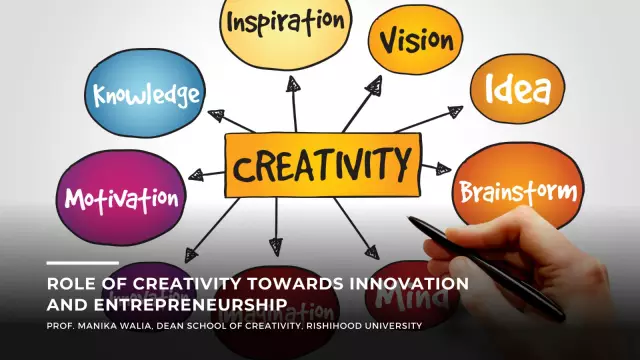- Author Rachel Wainwright [email protected].
- Public 2023-12-15 07:39.
- Last modified 2025-11-02 20:14.
Learning colors - educational games
The study of flowers with a child in a playful way should be started already from the age of one and a half, since it is this property of objects that he is able to isolate on his own. The ability to recognize this or that color will be required for a child already in kindergarten, and even more so at school.
Each of us is surrounded by a huge number of different colors and shades. It is the responsibility of the parents to introduce the child to this amazing world of colors. First of all, acquaintance with the color palette begins with the interior of the living quarters familiar to the child. Each walk should be used for a detailed acquaintance with the colors of the surrounding objects. For this purpose, it is also useful to use special children's literature with pictures.
Colors: educational games for kids

One of the simplest educational games, the colors in which the child remembers easily and without coercion, is to name the color of the favorite toys put in a row. It is imperative to buy or make cards, each of which is colored in one or another main color of the palette - red, blue, yellow and green - and regularly invite the child to name them.
The kids' favorite colorful pyramids, labyrinths, "mushrooms", cylinders, fruits, balls, inserts, etc. will help the baby learn to perceive color. An interesting game turns out if houses and little men of different colors are cut out of colored paper or cardboard, and then you invite the child to "take" each of the little men to a suitable house.
Gradually, such a set of cards should be expanded with additional colors and shades, while you should be patient and tactful in the learning process and not rush the baby. At the end of each developmental game with color, the child should have a positive attitude and a sense of satisfaction. In this case, he broadcasts his positive mood for subsequent education at school.
The best educational games
A child's memory of colors is based on associations - the grass is green, the sky is blue, the dandelion is yellow, etc. The application of one's own experience is of paramount importance. For example, the mother tells the baby that the sky, the river and the car are blue, and then asks: "What else do you see in blue?" Such a technique will force you to think, which means that the memory will have a brighter and more persistent color.
In the public domain, you can also find many educational poems and riddles that will help the child remember which colors are familiar objects and the colors of the rainbow. When studying color, educational games using paints or plasticine are necessary. They speed up the memorization of colors and reinforce this knowledge. Coloring books that kids love are great.
In everyday life, it is worth regularly practicing the skill of color perception. For example, you can ask a child to bring one or another item using its color characteristic: a yellow horse, a gray kitten, and so on.
You can invite your child to build a train from colored blocks. An adult chooses a locomotive by color, and a child selects suitable cars for it. When building a city out of multi-colored cubes, you can invite the kid to immediately determine the colors of the "objects": blue houses, green fences, red paths, etc.
By the third year of life, a child is able to distinguish the main colors of the spectrum, to perceive them meaningfully as an independent feature of an object. There are a huge number of toys for learning color, educational games and techniques. At this age, they are aimed at classifying an object according to a distinguished feature - in this case, color. For example, in front of the child, you can put figures of different shapes in several colors (for the beginning, three) and invite him to group them.

Such exercises are best done either in the morning, after breakfast, or in the evening, after a nap. Classes with toddlers under two years old should not exceed ten minutes, while from two to three years, they can be increased to twenty.
Despite the activity and activity of three-year-olds, they are not able to independently study colors, therefore the presence of an adult and his control of the process are mandatory. In the learning process, you should not use diminutive forms of adjectives of color, but you should immediately teach the child the correct names.
If, in the process of drawing or sculpting, the child uses not real colors (for example, draws a green elephant), you should not correct him, since in childhood, the emotions of a small person are manifested through color.
A child over three years old should also be introduced to additional colors and shades - gray, pink, blue, etc. The best educational games for developing color perception are those that are carried out when the child is in a good mood. If the kid is out of sorts and decided to be capricious, it is better to postpone training.
Found a mistake in the text? Select it and press Ctrl + Enter.






